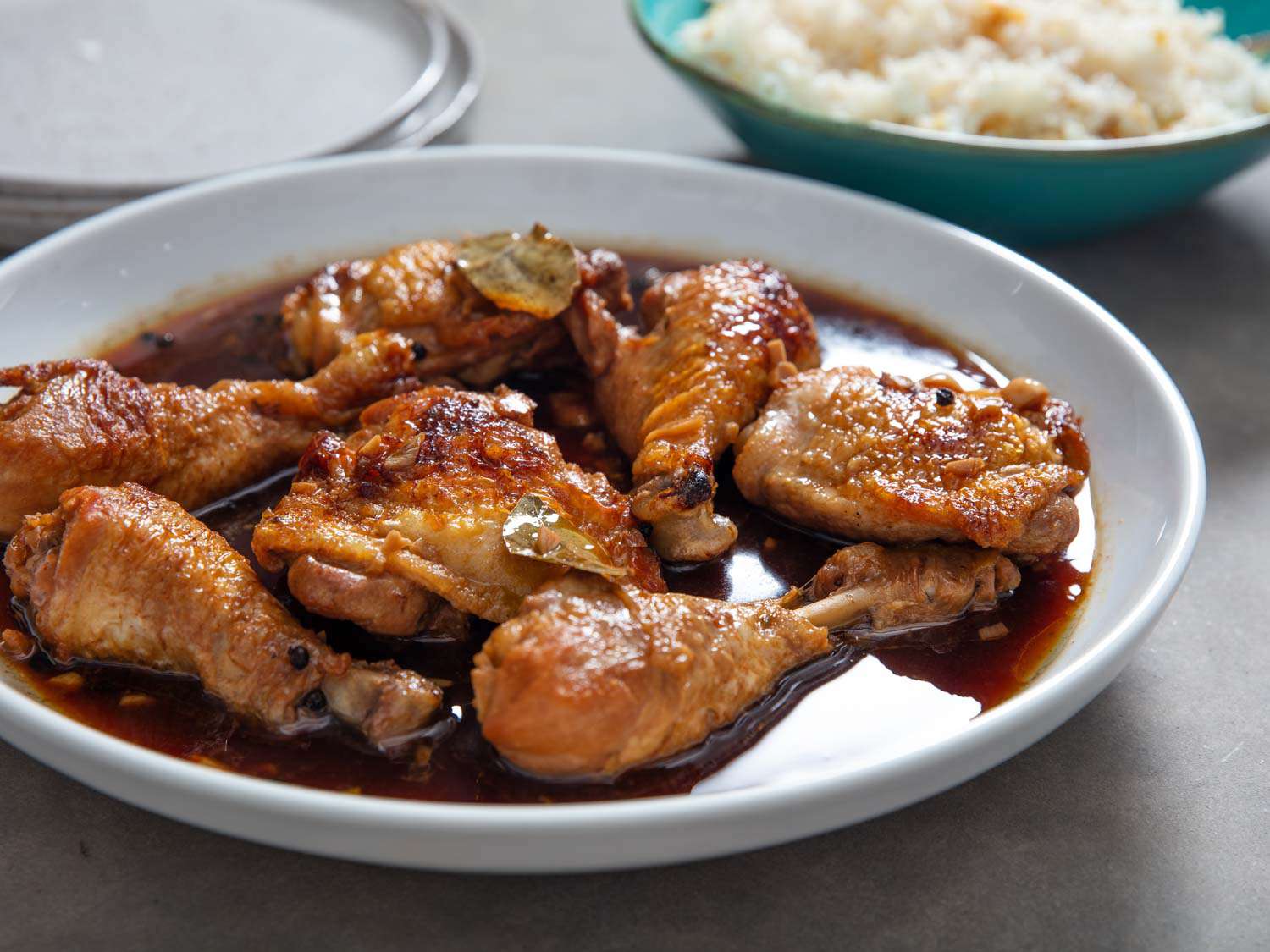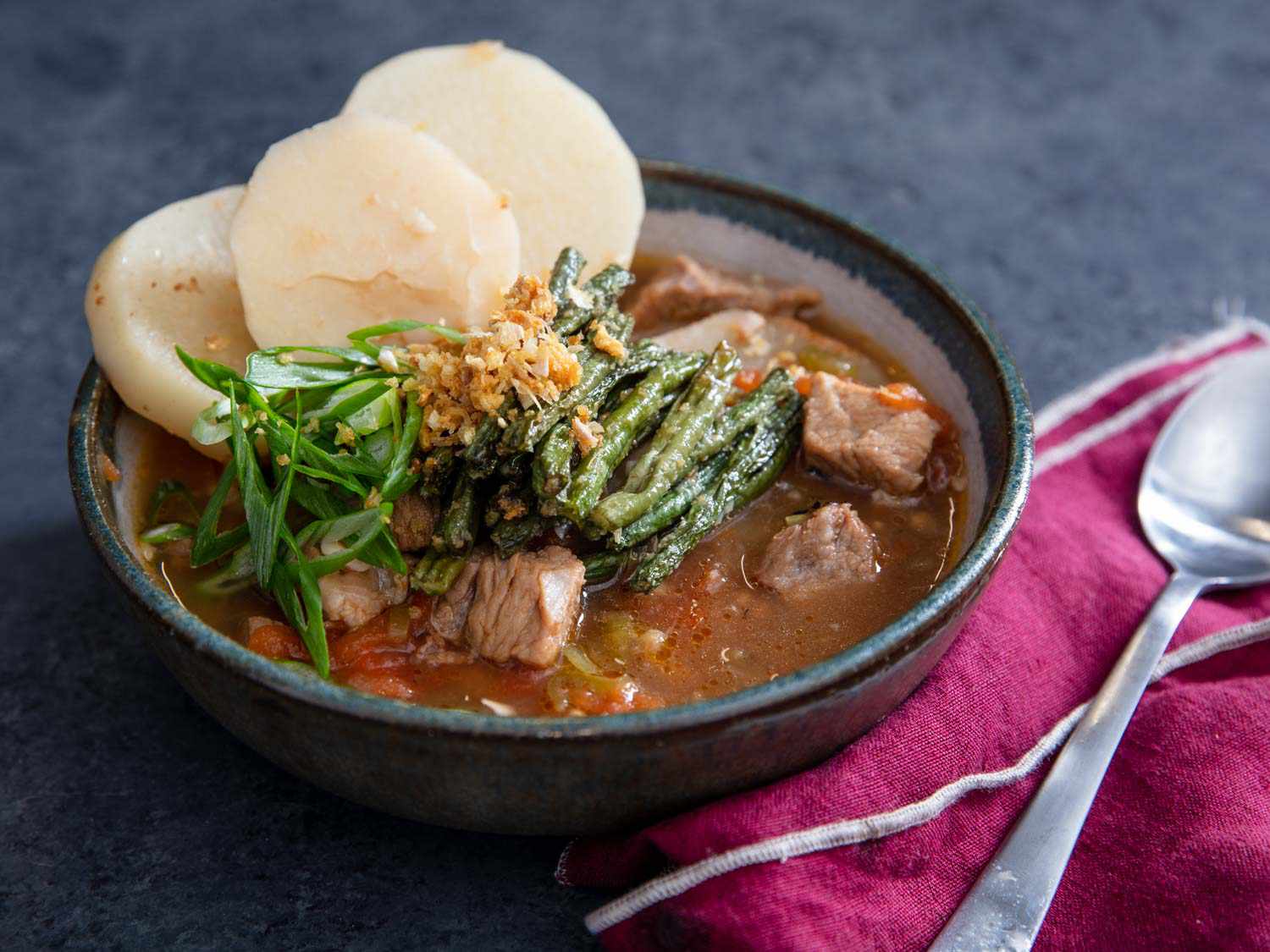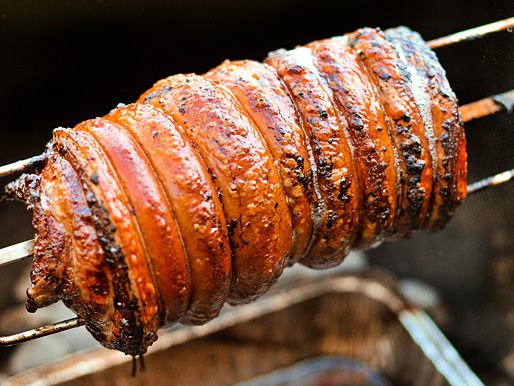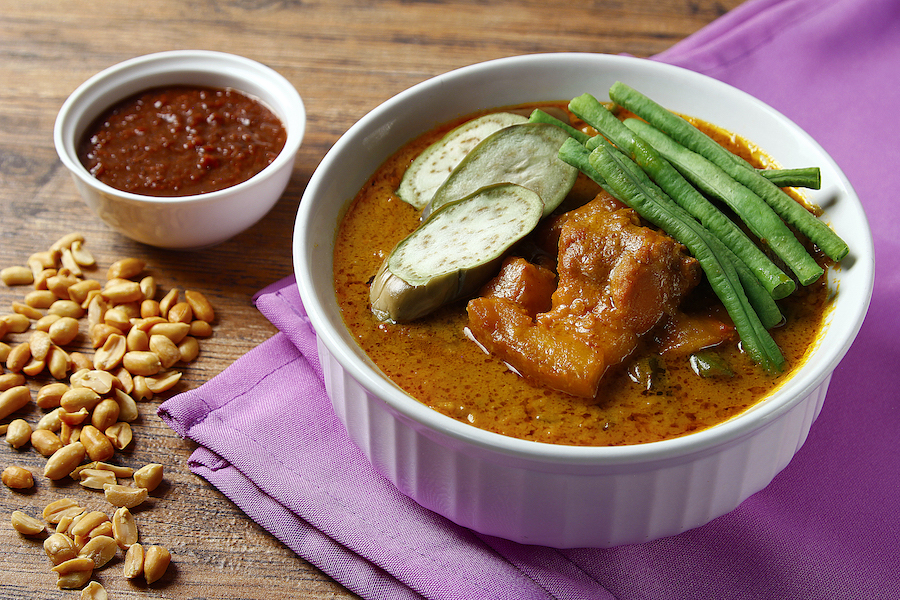
Adobo
Adobo
No exploration of Filipino cuisine is complete without savoring adobo, often hailed as the unofficial national dish. Adobo involves marinating meats, often chicken or pork, in a blend of soy sauce, vinegar, garlic, and spices before simmering to perfection. The result is a savory, slightly tangy dish with tender meat and a deeply flavorful sauce.
Sinigang
Sinigang, a comforting sour tamarind soup, exemplifies the Filipino love for bold flavors. This dish combines a medley of vegetables, meat (commonly pork or shrimp), and a tangy broth. The interplay of sourness, savory elements, and the warmth of the broth makes sinigang a beloved comfort food across the archipelago.

Sinigang
Lechon
Lechon, a succulent and crispy roast pig, is a centerpiece of festive occasions and celebrations. The whole pig is seasoned, skewered, and slow-roasted until the skin achieves a perfect crispiness, while the meat remains tender and flavorful. It’s a culinary spectacle that embodies the Filipino penchant for celebration through food.

Lechon
Halo-Halo
On the sweeter side, halo-halo is a beloved dessert that translates to “mix-mix.” This icy treat is a colorful medley of shaved ice, sweet beans, jellies, fruits, and leche flan, topped with evaporated milk and, sometimes, a scoop of ice cream. It’s a refreshing and delightful concoction that captures the tropical essence of the Philippines.

Halo Halo
Balut
For the more adventurous palate, balut is a unique Filipino street food. This fertilized duck egg is boiled and typically enjoyed with a sprinkle of salt and sometimes a dash of vinegar. While the idea of consuming a partially developed duck embryo may sound daring, balut is considered a local delicacy and a testament to the Philippines’ culinary diversity.

Balut
Kare-Kare
Kare-kare showcases the Filipino penchant for rich, savory stews. This oxtail and tripe stew is simmered in a peanut-based sauce, creating a creamy and flavorful dish. Often enjoyed with bagoong (fermented shrimp paste), kare-kare is a comforting and indulgent choice that represents the intricate flavors of Filipino cuisine.

Kare Kare








